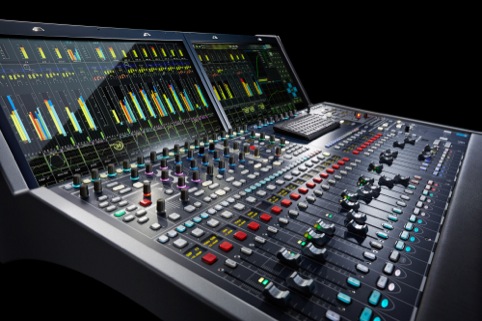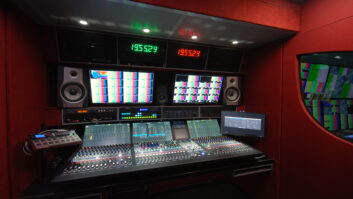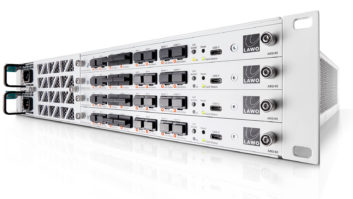
Lawo has chosen IBC as the launch platform for the mc²36 audio console all-in-one mixing desk. It features a DSP micro-core with internal 512×512 port audio matrix, and integrated I/O make it suited to permanent installations with limited space.
The console is natively equipped with RAVENNA/AES67 technology, so integrates into IP infrastructures, and for operational security, it not only has redundant power-supplies but also DSP redundancy.
The Lawo mc²36 was designed as a truly ‘universal’ console, with its focus on ease-of-use. Its 21.5-inch full HD touchscreens work with touch-sensitive colour-illuminated rotary encoders to provide intuitive operation.
The console’s interfaces include 32 mic/line inputs, 32 line outputs, eight digital AES3 inputs, eight digital AES3 outputs, eight GPIO ports, one MADI (SFP) port, three RAVENNA/AES67 channels, and a headphone jack. In addition to the onboard I/O, a MADI tie-line connection and three RAVENNA/AES67 Audio-over-IP ports provide future-proof connectivity for up to 384 external inputs and outputs, offering a total capacity of 496 physical inputs and outputs.
The mc²36 is also fully prepared for intelligent networking with other mc²36/mc²56/mc²66 consoles, and can be operated in combination with Lawo Nova audio routers, giving access to thousands of audio channels.
Further functionality includes Listen Sense (for offline modification of channel parameters like EQ or dynamics with pre-listen of settings before switching them online); Audio-follow-Video (allowing automated fades from one camera to another with associated audio channels); Upmix/Downmix (from stereo to surround and back); Automix (automatic adjustment of the Ievels of active and inactive microphones, while maintaining a constant ambient level); Remote Desktop (for seamless integration of multiple external PCs with third-party solutions into the console’s user interface); mxGUI (allowing complete offline configuration and advance show preparation); full channel strip customisation (allowing users to arrange the order of all DSP modules, including channel direct outputs, meter point, fader and aux sends); and Reveal (automatic input sorting of VCAs).







